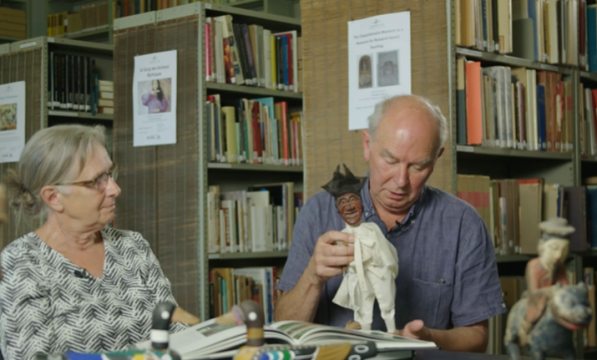Photographer Mark De Fraeye and his wife Patricia Verburg have donated their extensive collection of ethnic objects to the King Baudouin Foundation, with the aim of enriching our public collections and making these meaningful objects accessible to a wider audience. De Fraeye has also donated his own photographic works to the King Baudouin Foundation. These have been entrusted to AKG Images in Berlin, where they are preserved and made accessible in the very best conditions.
Photographic oeuvre
Starting in the 1980s, Mark De Fraeye travelled the world, using his camera to seek new encounters and gain access to unique places and people. In doing so, he has managed to capture what remains of certain traditional cultures, as well as to what extent globalisation has ultimately gone on to erode them. His poignant photographs have yielded numerous photography books, exhibitions and catalogues, with over 60 museums and cultural institutions both in Belgium and abroad including De Fraeye’s work as part of their collections.
Some of the donated visual material is on permanent display at both the Royal Museum of Mariemont (Morlanwelz) and the Dr Guislain Museum (Ghent), interacting with their collections of ethnic objects. At Leipzig's Grassi Museum, they are exhibiting Mark De Fraeye's photography project ‘Witness of Time’, in which he challenges the viewer to take a stance on themes such as decolonisation, restitution, economic exploitation and its environmental consequences.
In addition, De Fraeye has also donated his extensive photographic oeuvre (comprising over 40,000 slides, colour and b/w negatives and prints, digital H-res files and books), along with a collection of historical photographs from the 19th and 20th centuries. These are being housed at AKG-images in Berlin, where they are being preserved and made accessible. By entrusting this archive to one of Europe's biggest image banks, with whom the photographer worked for many years, this valuable photographic work can be accessed worldwide and continue to live on. Many of the images have already been digitised and made available online.
Korean everyday objects
Besides being a photographer, Mark De Fraeye also collects sculptures and (artistic) objects with his wife Patricia Verburg. For years, their collection of Asian art had constituted a serene, private universe in which they would surround themselves with objects found, bought or entrusted to them on their distant travels. Thanks to the pair's donation to the King Baudouin Foundation, Brussels’s Art & History Museum has been able to supplement its collection with all kinds of Korean artefacts. Previously, the museum's Korean collection consisted largely of archaeological materials, focusing primarily on ceramics. With De Fraeye and Verburg's donation, the collection has now been augmented with, among other things, objects from Korean everyday life. These have often borne witness to centuries of tradition, as is certainly the case for one large temple painting and two beautiful traditional cabinets. Wood prints, paintings and lacquer work depict the individuality of Korean techniques and symbolic imagery. What’s more, thanks to the donation, a selection of books has now been made available to both researchers and students in the museum library.
Non-Western practices in dialogue with Western medicine
Since 2008, the Dr Guislain Museum (Ghent) has had more than 600 pieces from the De Fraeye-Verburg collection on long-term loan. These were also donated, and are therefore set to remain accessible at the museum. This collection includes masks, amulets, utensils, etc., as well as photos from predominantly Asian countries. All these objects have a connection to illness, healing and health, as well as often to popular beliefs and natural medicine, which play a significant role in tribal, non-Western cultures. As such, this collection of ethnography fits in seamlessly with the Dr Guislain Museum's mission, highlighting the history and current debates around psychiatry, mental health and outsider art.
South-East Asian ethnography in focus
Finally, the couple's donation also includes a special collection of ethnic objects from Indonesia, Japan, Korea and Taiwan. These have found a home at the Royal Museum of Mariemont (Morlanwelz), where a collection of De Fraeye's photographs also subtly interacts with the objects on display.
